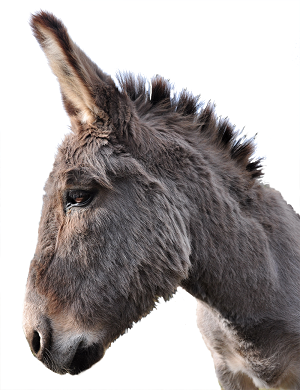LISA HULME-MOIR
Measurement of plasma ACTH is now widely accepted as the screening test of choice for Pars Pituitary Intermedia Dysfunction (PPID) in horses. However while we are gaining a level of comfort with using this test, it is worth keeping in mind that a number of factors can interfere with testing and should be considered when collecting samples and interpreting results.
Pre-analytical factors that can temporarily increase ACTH concentrations include recent transportation, heavy exercise, sedation/anaesthesia, pain, and illness.1 Generally it is thought that pain and illness need to be moderate to severe to have a significant impact on results, but as the effect of pre-analytical factors are generally not well characterised, it is recommended to avoid these if at all possible (i.e. only test unsedated horses that are otherwise well and have not been recently exercised or transported).
In addition to physiological influences on ACTH, there has been some recent information in the scientific literature to suggest the magnitude of the seasonal increase in ACTH may vary in different breeds. Several researchers have noted higher ACTH concentrations in pony breeds in autumn (especially Welsh ponies and Shetland ponies) and have suggested that the reference intervals we use for the seasonal increase in ACTH may not be entirely appropriate.2,3 Until this is more thoroughly investigated, test results from ponies during the autumn should be interpreted cautiously with careful consideration of the clinical picture and signalment.
There is also some uncertainty over reference limits for donkeys. Only a very small amount of information is available in the literature on ACTH in donkeys and what is present is somewhat conflicting. One study from the US found that ACTH concentrations in the early summer were higher in donkeys (mean ± SD = 66 ± 20.7 pg/mL) compared to horses (18.7 ± 6.8 pg/mL).4 However work performed in the UK on donkeys relinquished to the Donkey Sanctuary, reported lower mean concentrations of 40.2 pg/mL.5 No details were given however on the time of year when testing was performed in this latter study.
In order to provide some guidelines for interpreting ACTH concentrations in New Zealand donkeys, we are currently gathering data from clinically healthy donkeys with the assistance of a veterinarian in clinical practice. Initial results collected over March and April suggest donkeys in NZ do have higher ACTH concentrations than horses. The mean ACTH concentration (± S.D) from 29 clinically healthy donkeys (mean age = 9.5 years, range = 3-24 years) was 82 pg/mL (± 45.5, range 35-227 pg/mL). This is compared to our data from clinically healthy horses (n=19) in March and April, which found a mean concentration of 38.1 pg/mL ± 8.9 (range 21.7-54.9). Further testing is planned for the non-autumn period and a thorough summary of the results will be published at completion.
References:
1. McFarlane, D. Equine Pituitary Pars Intermedia Dysfunction. Vet Clin Equine 27: 93-113, 2011
2. Durham and Shreeve. Horse-factors influencing the seasonal increase in plasma ACTH secretion. Dorothy Russell Havemeyer Foundation International Equine Endocrinology Summit 2017, Conference abstract: 15.
3. Knowles et al. Plasma adrenocorticotropic hormone (ACTH) concentrations in ponies measured by two different assays suggests seasonal cross-reactivity or interference. Equine Vet J. 50: 672-677, 2018
4. Dugat et al. Values for trigylcerides, insulin, cortisol, and ACTH in a herd of normal donkeys. J Equine Vet Sci. 30: 141-144, 2010
5. du Toit et al. Insulin and ACTH values in donkeys with and without laminitis in the UK. In: 49th British Equine Veterinary Association Congress, British Equine Veterinary Association, Birmingham, UK. pp 88, 2010

